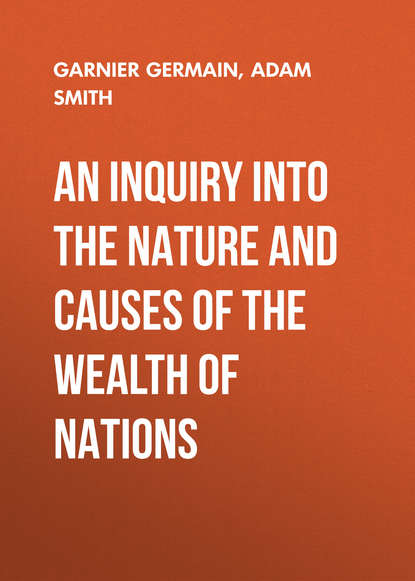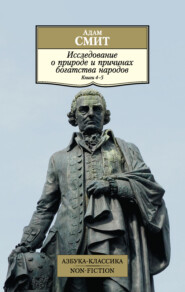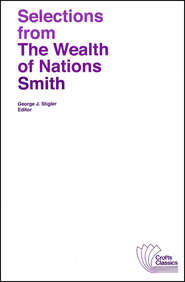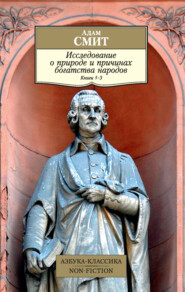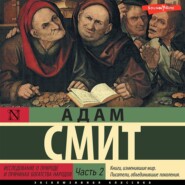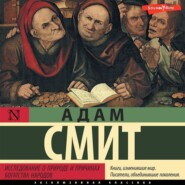По всем вопросам обращайтесь на: info@litportal.ru
(©) 2003-2025.
✖
An Inquiry Into the Nature and Causes of the Wealth of Nations
Автор
Год написания книги
2017
Настройки чтения
Размер шрифта
Высота строк
Поля
2. Circulating capital, which yields no revenue unless it be employed in trade – book 2 chap. i.
The whole accumulated wealth of any community may be divided into three parts:
1. The fund appropriated to the immediate consumption of the proprietors of wealth.
2. The fixed capital of the community.
3. Its circulating capital.
The fixed capital of the society consists,
1. Of all machines and instruments of labour;
2. Of all buildings and edifices erected for the purposes of industry;
3. Of every kind of agricultural improvement which can tend to render the soil more productive;
4. Of the talents and skill which certain members of the community have acquired by time and expense.
The circulating capital of a community consists,
1. In the money in circulation;
2. In the stock of provisions in the hands both of the producers and of the merchants, and from the sale of which they expect to derive a profit;
3. In the materials of lodging, clothing, dress, and ornament, more or less manufactured, which are in the hands of those who are employed in rendering them fit for use and consumption;
4. In the goods more completely fit for consumption, and preserved in warehouses and shops, by merchants who propose to sell them with a profit – book 2, chap. i.
Of the relation existing between the employment of these two kinds of capital – ibid.
Of the mode in which the capital withdrawn from circulation is disposed of – ibid.
The sources which continually renew the circulating capital, as soon as it enters into the fixed capital, or the stock for immediate consumption, are,
1. Lands;
2. Mines and quarries;
3. Fisheries – ibid.
Of the purposes accomplished by circulating coin – book 2, chap. ii; and the expedients which may be resorted to, in order to attain these with less expense, and fewer of those inconveniencies to which money is subjected – ibid.
Of the stock lent at interest; and of those things which regulate the proportion that this kind of stock bears to the whole existing stock of the community. The quantity of stock which may be lent depends in no degree upon the quantity of money in circulation – book 2, chap. iv.
Of the principles which determine the rate of interest – ibid.
There exists a necessary relation between this and the price of land – ibid.
PART THIRD – OF THE MANNER IN WHICH THE MULTIPLICATION AND DISTRIBUTION OF WEALTH TAKES PLACE
Wealth uniformly increases in proportion to the augmentation which the power producing it receives, whether that be in energy or in extent– book I. introduction.
Labour, in which this power increases in energy,
1. By the division of the parts of the same work;
2. By the invention of such machines as abridge and facilitate labour – book I, chap. i.
The division of labour adds to its energy,
1. By the skill which the workman in this way acquires;
2. By the saving of time – ibid.
The invention of machines is itself an effect of the division of labour – ibid.
The natural disposition of mankind to exchange with each other the different productions of their respective labours and talents, is the principle which has given birth to the division of labour – book I, chap. ii.
The division of labour must of course be limited by the extent of the market; therefore, whatever tends to widen the market, facilitates the progress of a nation towards opulence – book I, chap. iii.
Labour gains in extent,
1. In proportion to the accumulation of capital;
2. In proportion to the manner in which these are employed – book I, introduction.
The accumulation of capitals is hastened by the increase of the proportion existing between the productive and unproductive consumers – book 2, chap. iii.
The proportion between these two classes of consumers is determined by the proportion existing between that part of the annual produce destined to the replacement of capital, and that destined for the purpose of revenue – ibid.
The proportion between that part of the annual produce which goes to form capital, and that which goes to form revenue, is great in a rich country, and small in a poor one – ibid.
In a wealthy country, the rent of land, taken absolutely, is much greater than in a poor country; but, taken in relation to the capital employed, it is much less – book 2, chap. iii.
In a wealthy country, the whole profits of its capital are infinitely greater than in one that is poor; although a given quantity of capital will, in a country of the latter description, produce profits much greater than in an opulent one – ibid.
It is industry that furnishes the produce; but it is economy that places in the capital that part of it which would otherwise have become revenue – ibid.
The economy of individuals arises from a principle which is universally diffused, and one that is continually in action; the desire of ameliorating their condition. This principle supports the existence and increase of national wealth, in spite of the prodigality of some individuals; and even triumphs over the profusion and errors of governments – ibid.[Pg xxviii]
Of the different modes of spending money, some are more favourable than others to the increase of national wealth – ibid.
Those branches of employment which require a capital, never fail to call forth more or less labour; and thus contribute, in a greater or less degree, to increase the extent of national labour.
Capital can be employed only in four ways:
1. In cultivating and improving the earth, or, in other words, multiplying its rude produce;





